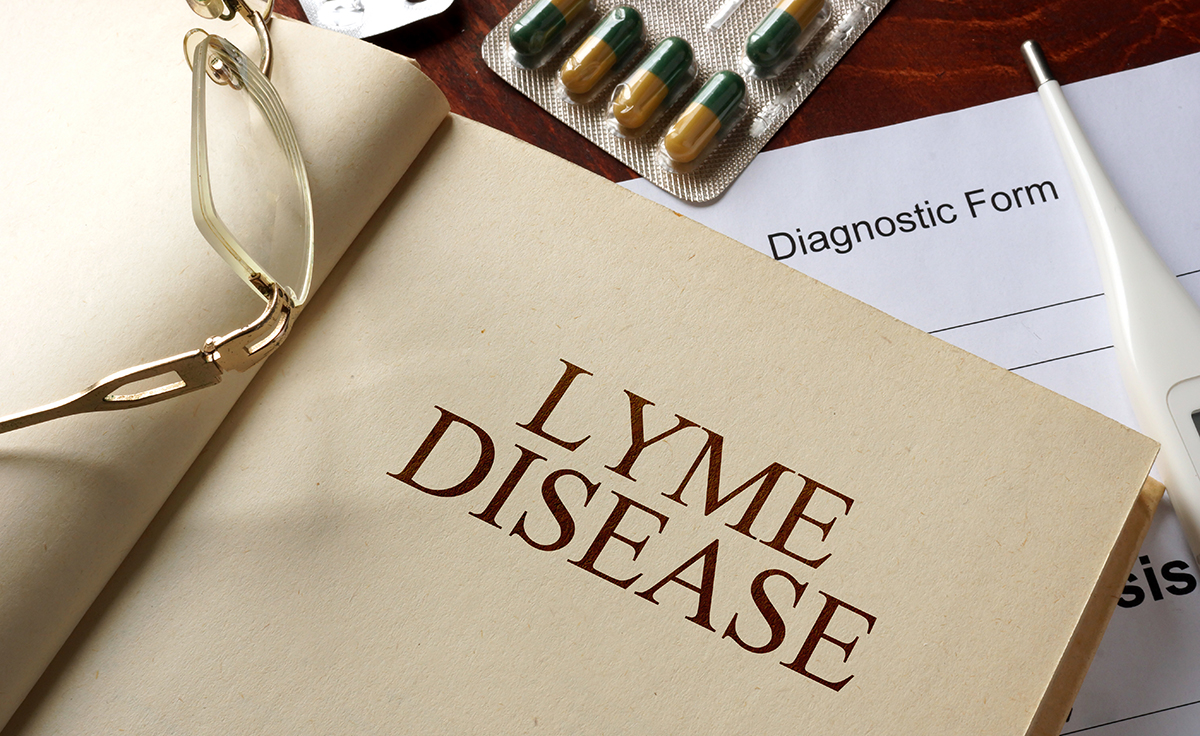JAMA review ignores chronic manifestations of Lyme disease

A review published in the Journal of the American Medical Association (JAMA) examines the efficacy of treatment for Lyme disease, anaplasmosis and babesiosis. [1] After a search yielded more than 4,000 articles, the authors reviewed 361 studies and concluded that a 7- to 14-day course of antibiotics is sufficient in treating early neurologic Lyme disease, as well as certain cases of babesiosis. [1] Unfortunately, the reviewers based their findings on a select group of articles, excluding findings demonstrating chronic manifestations of the disease.
by Daniel J. Cameron, MD MPH
“Multiple trials have shown efficacy for a 10-day course of oral doxycycline for treatment of erythema migrans and for a 14-day course for treatment of early neurologic Lyme disease in ambulatory patients,” the review concludes. Furthermore, “Evidence indicates that a 10-day course of oral doxycycline is effective for HGA [human granulocytic anaplasmosis] and that a 7- to 10-day course of azithromycin plus atovaquone is effective for mild babesiosis.” [1]

For example, the reviewers do not include all the findings of a 2008 Norwegian clinical trial. [1] The authors “compared doxycycline (200 mg once daily orally) with ceftriaxone (2 g once daily intravenously) for 14 days in 102 participants from Norway with neurologic Lyme disease and found no treatment failure in either treatment group.” [2]
However, the reviewers fail to mention that 59% of those 102 Norwegian subjects reported residual symptoms at 4 months following treatment. According to the study, 52% of the patients had received oral doxycycline, while 67% were given intravenous ceftriaxone, and 31 patients had objective findings including “facial palsy or other cranial neuropathy (n=11), radiculopathy (n=10), cranial neuropathy and radiculopathy (n=6), paresis (n=2), possible encephalopathy (n=1), and unsteadiness (n=1).” [2]
Nor did the reviewers offer advice for the Lyme disease patients who were not cited. For example, 34% to 62% of two retrospective cohorts remained ill despite antibiotic treatment. [3,4] Out of the 30 adults with ‘definite’ Lyme neuroborreliosis, 57% remained ill an average of 5.7 years after antibiotic treatment. [5] Furthermore, another study found 36% of patients treated with 3 weeks of antibiotics reported new-onset fatigue, 20% widespread pain, and 45% neurocognitive difficulties at six months following treatment. [6]
It’s unclear whether the review findings were influenced by the viewpoint of one of its authors, who denies the existence of chronic Lyme disease. “Considerable confusion and controversy exist over the frequency and cause of this process and even over its [chronic Lyme disease] existence,” [7] writes Gary Wormer, co-author of the 2006 Infectious Diseases Society of America’s (IDSA) treatment guidelines for Lyme disease.
It is a shame that the reviewers ignored findings demonstrating the growing number of chronic manifestations of Lyme disease, such as chronic neurologic Lyme disease, [8] Lyme encephalopathy, [9,10] Post Lyme disease, [11] Post-treatment Lyme disease syndrome, [6] and persistent symptoms with a history of Lyme disease. [12]
Disclosure: This blog was written by Dr. Daniel Cameron, first author of evidence-based guidelines that address the chronic manifestations of Lyme disease. [13]
References:
References:
- Sanchez E, Vannier E, Wormser GP, Hu LT. Diagnosis, Treatment, and Prevention of Lyme Disease, Human Granulocytic Anaplasmosis, and Babesiosis: A Review. Jama, 315(16), 1767-1777 (2016).
- Ljostad U, Skogvoll E, Eikeland R et al. Oral doxycycline versus intravenous ceftriaxone for European Lyme neuroborreliosis: a multicentre, non-inferiority, double-blind, randomised trial. Lancet Neurol, 7(8), 690-695 (2008).
- Asch ES, Bujak DI, Weiss M, Peterson MG, Weinstein A. Lyme disease: an infectious and postinfectious syndrome. J Rheumatol, 21(3), 454-461 (1994).
- Shadick NA, Phillips CB, Logigian EL et al. The long-term clinical outcomes of Lyme disease. A population-based retrospective cohort study. Ann Intern Med, 121(8), 560-567 (1994).
- Dersch R, Sarnes AA, Maul M et al. Quality of life, fatigue, depression and cognitive impairment in Lyme neuroborreliosis. J Neurol, (2015).
- Aucott JN, Rebman AW, Crowder LA, Kortte KB. Post-treatment Lyme disease syndrome symptomatology and the impact on life functioning: is there something here? Qual Life Res, 22(1), 75-84 (2013).
- Wormser GP, Dattwyler RJ, Shapiro ED et al. The clinical assessment, treatment, and prevention of lyme disease, human granulocytic anaplasmosis, and babesiosis: clinical practice guidelines by the Infectious Diseases Society of America. Clin Infect Dis, 43(9), 1089-1134 (2006).
- Logigian EL, Kaplan RF, Steere AC. Chronic neurologic manifestations of Lyme disease. N Engl J Med, 323(21), 1438-1444 (1990).
- Logigian EL, Kaplan RF, Steere AC. Successful treatment of Lyme encephalopathy with intravenous ceftriaxone. J Infect Dis, 180(2), 377-383 (1999).
- Fallon BA, Keilp JG, Corbera KM et al. A randomized, placebo-controlled trial of repeated IV antibiotic therapy for Lyme encephalopathy. Neurology, 70(13), 992-1003 (2008).
- Krupp LB, Hyman LG, Grimson R et al. Study and treatment of post Lyme disease (STOP-LD): a randomized double masked clinical trial. Neurology, 60(12), 1923-1930 (2003).
- Klempner MS. Controlled trials of antibiotic treatment in patients with post-treatment chronic Lyme disease. Vector Borne Zoonotic Dis, 2(4), 255-263 (2002).
- Cameron DJ, Johnson LB, Maloney EL. Evidence assessments and guideline recommendations in Lyme disease: the clinical management of known tick bites, erythema migrans rashes and persistent disease from Expert Review of Anti-infective Therapy 2014 at https://www.tandfonline.com/doi/full/10.1586/14787210.2014.940900.




Join the Lyme Conversation
(Note: comments are moderated. You will see your comment after it has been reviewed.)